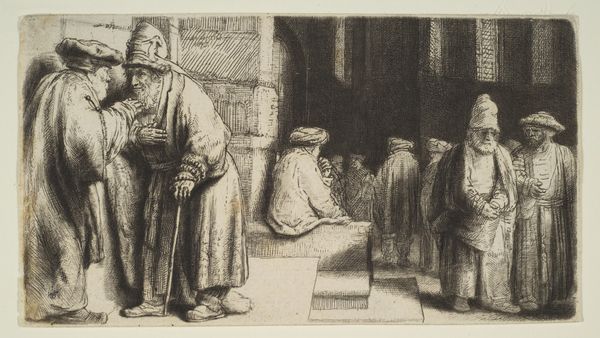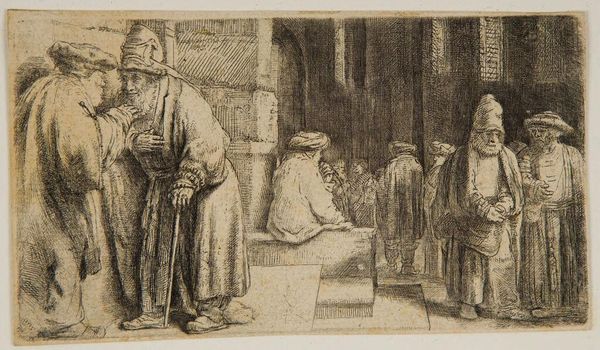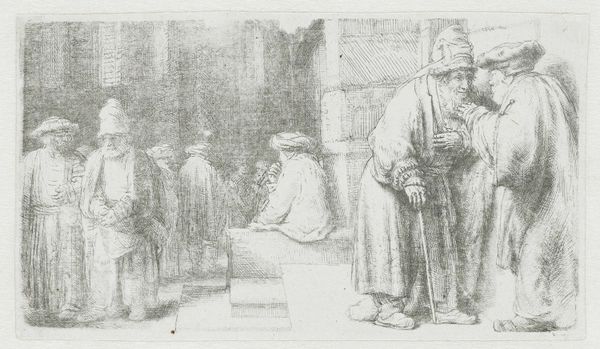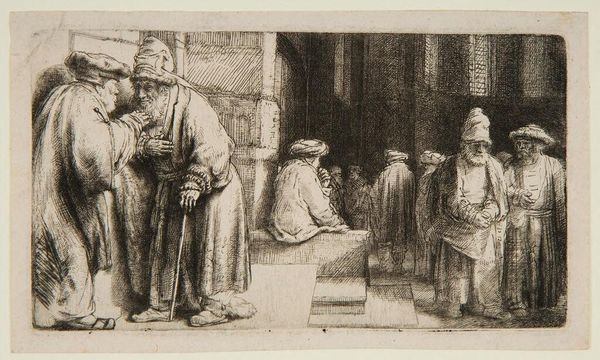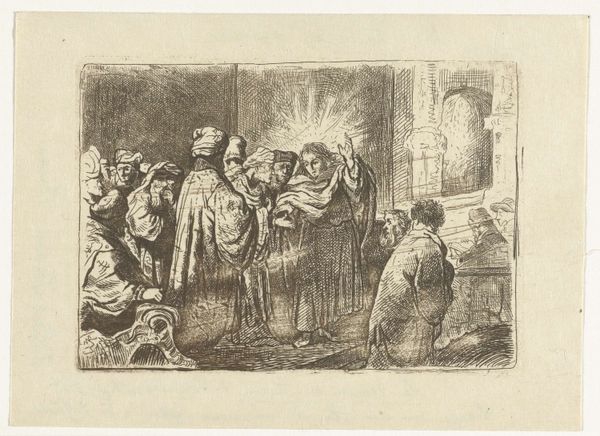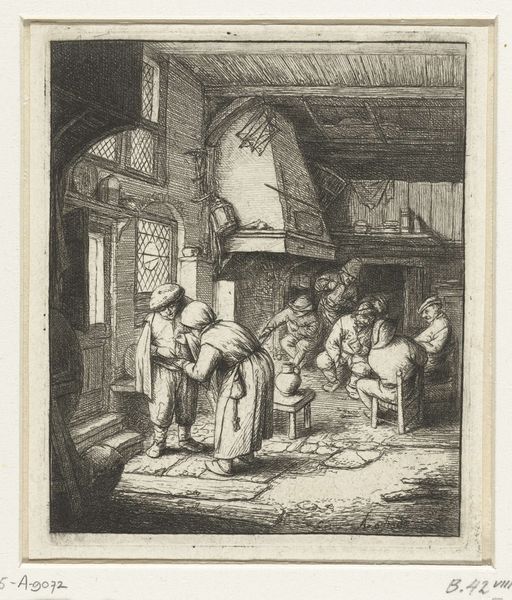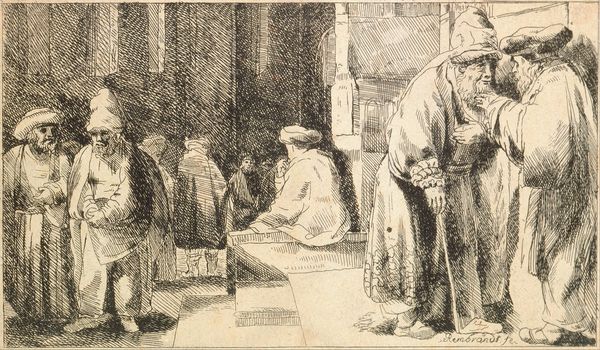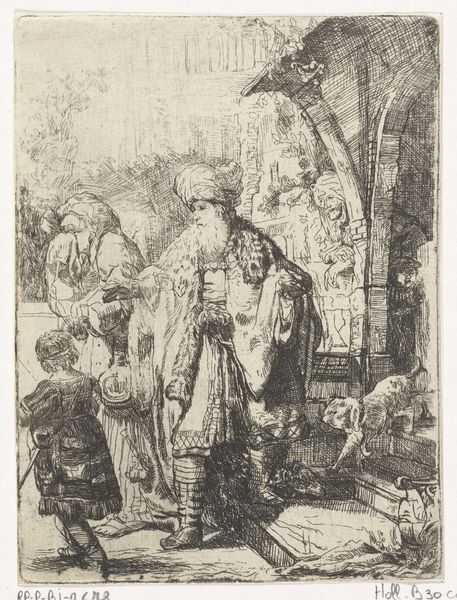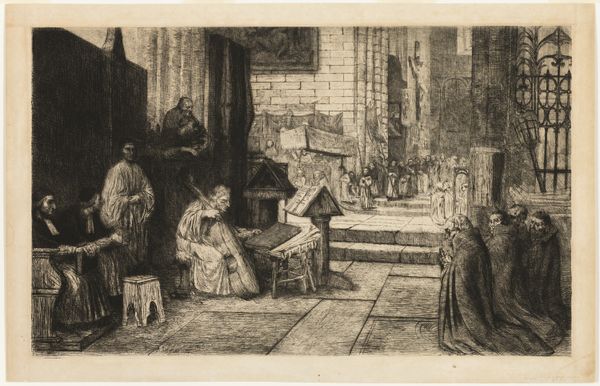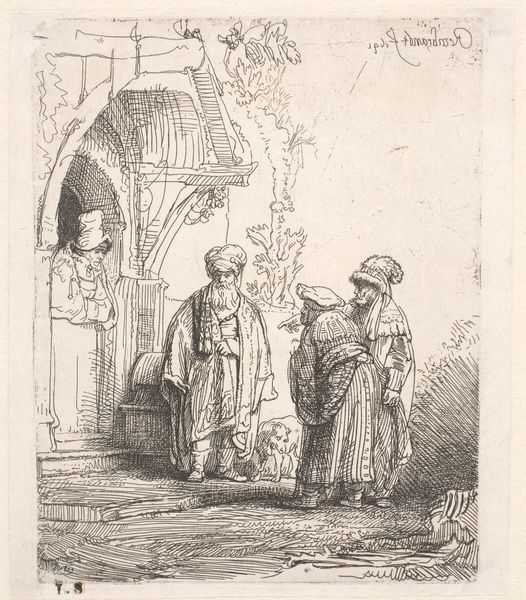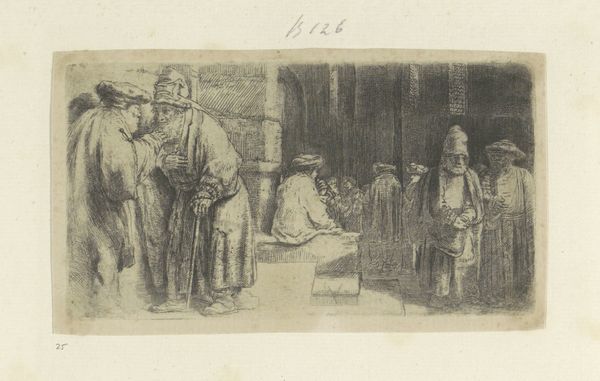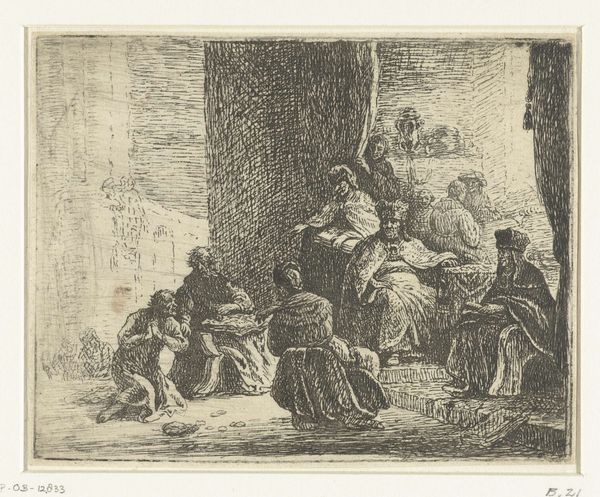
Dimensions: height 71 mm, width 129 mm
Copyright: Rijks Museum: Open Domain
Curator: This etching, titled "Jews in the Synagogue," is by Rembrandt van Rijn and spans the years 1648-1906. It's currently held in the Rijksmuseum collection. Editor: It's remarkable how he evokes such a sense of bustling interiority with a simple etching. The depth he achieves with line and tone is impressive, despite its size. The light, or lack thereof, immediately signals introspection. Curator: The formal composition clearly utilizes tenebrism, a key feature of Baroque art, emphasizing the contrast between light and dark to create drama and draw the eye to the focal points of the narrative. It seems that Rembrandt here skillfully captures not just the external appearances of individuals, but their emotional and spiritual states through these visual structures. Editor: Consider the sheer materiality of etching; a copper plate worked and re-worked to transfer the fleeting scene of daily life in Amsterdam’s Jewish community onto paper. The layering of the cross-hatching in the foreground, compared to the smoother, shallower lines toward the back indicates not only pictorial space but Rembrandt's physical working of the medium. How might the cost and relative ease of producing printed imagery have shifted art production during that time? Curator: Interesting thought. Analyzing through a semiotic lens, we might examine the symbolic meanings embedded within the portrayal of the Jewish community at that time. What significance does Rembrandt give to the portrayal of their faith, and can we perceive the signs indicating the group identity within that historic context? Editor: Also, what do you make of that time span "1648-1906?" Was the plate reworked at a later date or are we dating multiple pulls here? The history of the plate's production—of art making itself—can shed more light on the status and cultural standing of Jews in Amsterdam over a nearly 250 year stretch. Curator: Perhaps future material analysis will answer this specific question. It is fascinating how structuralist views invite us to dissect Rembrandt's piece within a larger framework, highlighting the underlying patterns and rules that govern representation, whereas the materiality of printmaking focuses our consideration on a smaller framework of daily life within early modern Amsterdam. Editor: Indeed. Pondering over this, one sees how studying art through these different frames—through structure, materiality, and process—opens up the possibility of multiple insights that echo across both temporal and cultural settings.
Comments
No comments
Be the first to comment and join the conversation on the ultimate creative platform.
